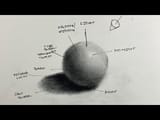>>1014931
>You're lying
Not at all, I could sit down and write a PBR shader from scratch because I now understand the underlying phenomena.
But that doesn't mean I'm an expert or an authoritative source either, I'm still a student of these things relying on data and papers from
people who actually understand this as good as anyone to do most of what I do.
I've been doing digital art since the early 90's, 3D since 98, I learnt to code and write shaders about ~15 years ago.
Looking back I'd say I was about 30 years old when I started to have a coherent understanding of the shader pipe
at ~40 years old I'm still learning new things or refining my knowledge everytime I set out to tweak things in this regard.
Refreshing and reinforcing things I already knew to a higher degree as well as adding new nuance and insight.
Knowing a bit of real world physics and what actually happens in reality vs what we do in the computer grounds you and
makes you internalize how we've always been dealing with approximations of phenomena that we keep finding better ways to refine.
The fact we call our current era shaders 'physically based' is not the same as saying they are 'physically accurate'
What Jim Blinn did in the 70's was also 'Physically based' after all.
Looking back what I did as an artist prior to knowing about the physics and how rendering work was very impressionistic and confused compared
to what I do today if I sit down and render something, whether I do it manually with ink or paint or setting up a scene for rendering.
I look at an image now I could describe the optical phenomena I see and know what subtle effects to look for and how to account for them.
That was not the case when I was just an artist trying to capture the feel of what I saw, misunderstanding/misrepresenting optical phenomena.

